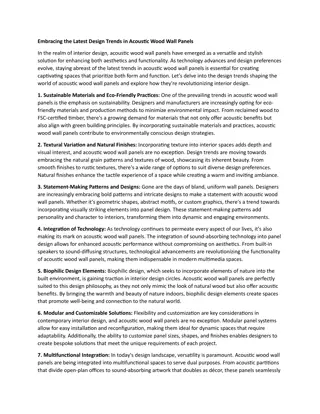Advancements in Online Saw Monitoring for Wood Industry 4.0
Explore the latest research on online saw monitoring in the context of Industry 4.0, focusing on tools like cloud computing, smart sensors, and artificial intelligence for enhanced monitoring capabilities in the sawmill industry. Discover the importance of tool health monitoring, wear detection, and energy consumption monitoring within the sawmill operations. Gain insights from literature overview discussing the need for more emphasis on wood cutting conditions and advanced signal processing techniques. Dive into case studies on monitoring cutting power and waviness in sawing processes, highlighting the impact of feed and rotation speeds.
Download Presentation

Please find below an Image/Link to download the presentation.
The content on the website is provided AS IS for your information and personal use only. It may not be sold, licensed, or shared on other websites without obtaining consent from the author.If you encounter any issues during the download, it is possible that the publisher has removed the file from their server.
You are allowed to download the files provided on this website for personal or commercial use, subject to the condition that they are used lawfully. All files are the property of their respective owners.
The content on the website is provided AS IS for your information and personal use only. It may not be sold, licensed, or shared on other websites without obtaining consent from the author.
E N D
Presentation Transcript
Saw science: Saw science: New research on online saw New research on online saw monitoring monitoring Vahid Nasir, Ph.D. Candidate Department of Wood Science
Cloud computing Smart sensors Internet of things Industry 4.0 Automation and Robotics Big data analytics
Industry 4.0 within the sawmill context Tool health monitoring Wear detection Chatter detection Surface quality assessment Energy consumption monitoring
Literature overview Little research emphasis on wood primary applications extreme cutting conditions different saw blade characteristics Lack of studies on waviness monitoring focus on surface roughness monitoring Lack of practicing sophisticated signal processing and machine learning methods
Monitoring Sensor selection Signal processing and feature extraction Artificial Intelligence Feature Selection Acoustic Accelerometer Acoustic emission Current Laser displacement sensor 8
Feature selection Manual Automatic Not necessarily optimized Can be linked to an optimization model Black-box approach
Case study Monitoring the cutting power and waviness in the circular sawing process of Douglas-fir wood
Data acquisition Waviness
Impact of feed and rotation speeds Power Waviness
1. Manual feature selection Objectives: Evaluate the performance of an acoustic emission sensor in predicting power and waviness Identify the optimal sensory features to maximize the performance of a neural network
Results Sensory features Maximum R2 of 0.98 and 0.89 for power consumption and waviness prediction Optimization model (PSO) ANN
2. Automatic feature selection Objectives: Evaluate the performance of an accelerometer sensor in predicting power and waviness Quantify the potential of using an automatic feature selection process in combination to a neural network
Automatic selection Artificial neural network Power and waviness monitoring Self-organizing maps Vibration signals
Results Maximum R2 of 1 can be achieved for both power and waviness Artificial neural network Power and waviness monitoring Self-organizing maps Vibration signals
Smart manufacturing Deep machine learning techniques Big datasets
Conclusion Canadian sawmills could benefit from using sensors and employing sophisticated signal processing and artificial intelligence methods for accurate process condition and tool health monitoring
Thank you! Vahid.nasir@alumni.ubc.ca























